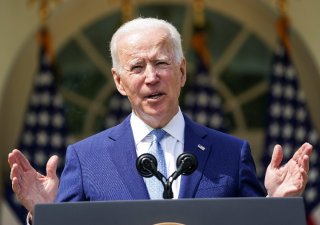$1,400 Stimulus Check: What Are People Spending Their Cash On?
So what are Americans spending their stimulus money on? The New York Fed recently looked at that question.
The federal government has rolled out three rounds of stimulus packages since the start of the coronavirus pandemic, most recently with the American Rescue Plan, which was signed into law by President Biden in early March.
The idea of the direct payments in the packages is to get Americans a break following the struggles of the pandemic, while also injecting money into the economy at a time when an additional stimulus is needed.
So what are Americans spending their stimulus money on? The New York Fed recently looked at that question.
According to a blog post on the Fed’s blog, Liberty Street Economics, authored by Olivier Armantier, Leo Goldman, Gizem Koşar, and Wilbert van der Klaauw, looked at how Americans spend the second stimulus check, which arrived in late 2020, and how they planned to use their payments from the Rescue Plan. They found that not much has changed, over the course of the payments, in how people are spending the money.
The survey cited the New York Fed’s Survey of Consumer Expectations.
“We find remarkable stability in how stimulus checks are used over the three rounds, with a slight decline in the share dedicated to consumption and a proportional increase in the share saved,” the authors wrote. “The average share of stimulus payments that households set aside for consumption—what economists call the marginal propensity to consume (MPC)—declined from 29 percent in the first round to 26 percent in the second and to 25 percent in the third.”
The survey looked at which percent of the money respondents had spent, saved, or put toward debt their stimulus money, in three different months-June, January and March.
As for the Rescue Plan money, respondents told the New York Fed that “an average 13 percent of the latest stimulus check is expected to be spent on essential items and an average 8 percent on non-essential items.”
“There are reasons to think the first two rounds of stimulus payments to households have contributed to changes in aggregate spending and savings,” the New York Fed concluded. “The second round of payments coincided with a 3.0 percent increase in real aggregate consumer spending and a 9.7 percent increase in real personal income in January. Despite these increases, spending as measured by real personal consumption expenditures (PCE) remains below pre-pandemic levels of February 2020, while the personal savings rate stood at a striking 19.8 percent in January.”
There have been warnings of late about scammers going after stimulus checks, while some members of Congress and state-level elected officials are planning to make it illegal for debt collectors to garnish stimulus check payments.
Stephen Silver, a technology writer for The National Interest, is a journalist, essayist and film critic, who is also a contributor to The Philadelphia Inquirer, Philly Voice, Philadelphia Weekly, the Jewish Telegraphic Agency, Living Life Fearless, Backstage magazine, Broad Street Review and Splice Today. The co-founder of the Philadelphia Film Critics Circle, Stephen lives in suburban Philadelphia with his wife and two sons. Follow him on Twitter at @StephenSilver.

